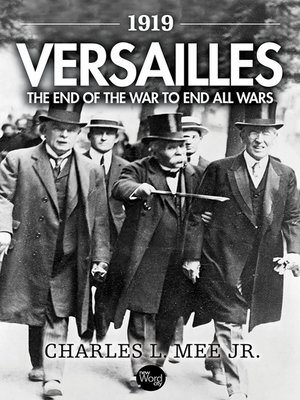
Sign up to save your library
With an OverDrive account, you can save your favorite libraries for at-a-glance information about availability. Find out more about OverDrive accounts.
Find this title in Libby, the library reading app by OverDrive.



Search for a digital library with this title
Title found at these libraries:
| Library Name | Distance |
|---|---|
| Loading... |
World War I and the Versailles Treaty that followed produced the most serious upheaval in a long and stormy course of modern world history. Four great empires - Germany, Austria-Hungary, Turkey, and Russia - were part of the war's rubble. Far from restoring the world to order, the diplomats who met in 1919 at Paris and Versailles plunged the world again, this time irretrievably, into the chaos of the twentieth century. It was the end of order.
At three o'clock on the afternoon of May 7, 1919, the head of the German delegation to the Paris Peace Conference entered a room in the Palace of Versailles and was "dazzled and disoriented by the sudden explosion of sunlight reflected in the vast mirrors, the chandeliers and white walls." Brockdorf-Rantzau was further bewildered by the treaty that was presented to him - "a mass of cross references and changed paragraphs" covering 200 printed pages and 140 articles. Yet no one had studied the document - not the barrel-chested, shrewd, ferocious Georges Clemenceau, commonly called The Tiger; not the mercurial and crafty Lloyd George; and not Woodrow Wilson, the orator who looked like a Presbyterian minister and had been hailed as the Savior of Europe.
Here is what happened when the three most powerful heads of state gathered to establish a new order.







